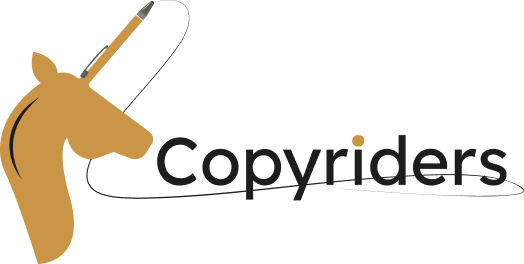Aristotle defines virtue as the desirable middle ground between two extremes, the Golden Mean. In Aristotle’s philosophy, deficiency or excess destroys virtue. Buddha summarized the Golden Mean as the Middle Way, a moderate path between extremes, avoiding the extremes of self-denial and self-indulgence, as well as the view of reality that avoids the extreme positions. Aristotelian and Buddhist ethics are alike, each advocates moderation.
At Copyriders, we are constantly striving to achieve balance in our workflow. This blog explores the concept of balance in your content creation strategy so that you can use length, timing, and frequency of posting blogs, articles, social media posts, emails, or anything else. You will learn to optimize how, when, and what to do when posting content.
Content and Timing: A Perfect Symbiosis
Timing plays a crucial role in optimizing your marketing efforts. It is the invisible thread weaving all your marketing strategies together, ensuring that your carefully crafted messages reach your audience at the most opportune times.
When to publish a blog post or send an email makes a significant difference in the level of engagement you can expect. For instance, research by Hubspot suggests that the best days to post on LinkedIn for maximum views are Mondays, Wednesdays, or Tuesdays, in that order, between 9 – 12 PM, 12 – 3 PM, or 3 – 6 PM.

Likewise, when it comes to emails, OptinMonster shows that 58% of consumers check their email first thing in the morning, making it an ideal time to send out your campaigns. But, again, this depends on your audience’s unique characteristics.
Balancing Quality and Frequency
Another critical aspect of a successful digital marketing strategy is the frequency of your content. Although there are many statistics out there, we suggest posting content AT LEAST once per day. This will encourage you and your team to stay consistent, and it is a good metric to see your audience grow within the first 3 months.
Important Things to Consider:
Track Progress: Use analytic tools like Google Analytics, LinkedIn metric, and Facebook Insights to gain a deeper understanding of your audience’s behavior. You’ll need to adjust your posting schedule to align with your target audience’s activity patterns.
Timing is Everything: Regularly test different days and times to find what works best for your specific audience.
Adjust Frequency Based on Goals: If you aim to increase your click-through rate (CTR), frequent posting might be beneficial. Conversely, if your goal is brand awareness, a less aggressive schedule might be more effective.
Consider Your Competition: Keep an eye on when your competitors publish new content. This can help you decide whether to compete head-on or adjust your schedule to avoid competition.
Don’t Be Too Clingy: Avoid overwhelming your audience with emails. Try to send out one email, and then every subsequent email to raise awareness or follow up with people from your target list should be spaced out in 4-day intervals at a minimum. This is to say, send emails every 4 days.
You may also have been asking yourself:
How long should my social media content be?
Short enough to be interesting, long enough to cover everything.
The length of your content should be determined by the type of content you’re posting and the strategy you’re using. Based on our intuition and experience, and although there is no “perfect” rule, here’s how long each piece of content should be:
– Emails: 150 words min – 450 words max
– Single Landing Pages: 220 words min – 1500 words max
– LinkedIn Posts: 300 words min – 500 words max
– Tweets: 20 words min – 45 words max
– Thought Leadership Articles: 550 words min – 1500 words max
– Press Release Announcements: 350 words min – 750 words max
– Infographics: 800 words min – 2,200 words max
– E-books: 5,000 words min – 35,000 words max
– Search Engine Optimization – SEO Blogs: 1,000 words min – 4,000 words max
All in all, finding the middle ground in content marketing might require trial and error, and the specifics will certainly vary depending on your industry, audience, and goals. The key to optimizing your content marketing efforts rests on a well-balanced approach to content timing, frequency, and length.
Just remember, the path to effective content marketing isn’t through extremes, but rather, it’s found by navigating the middle way — the path of balance, consistency, and understanding your audience’s needs. And at the end of the day, it’s about delivering valuable content that not only grabs attention but also holds it.
Do you need help in creating a content calendar?

